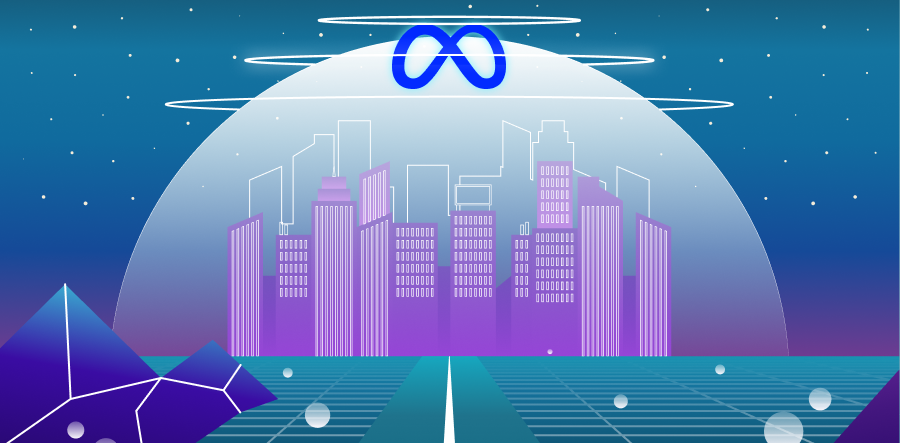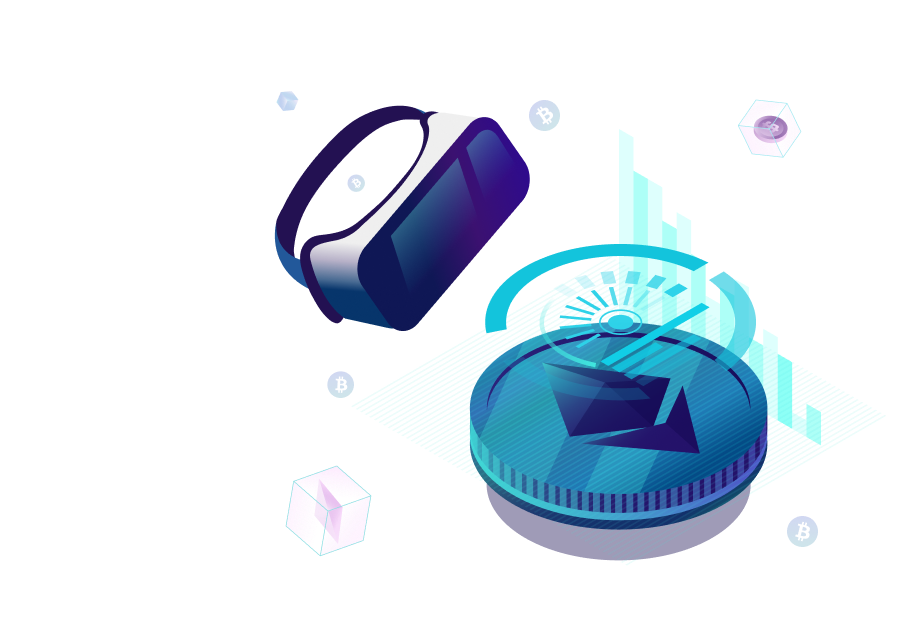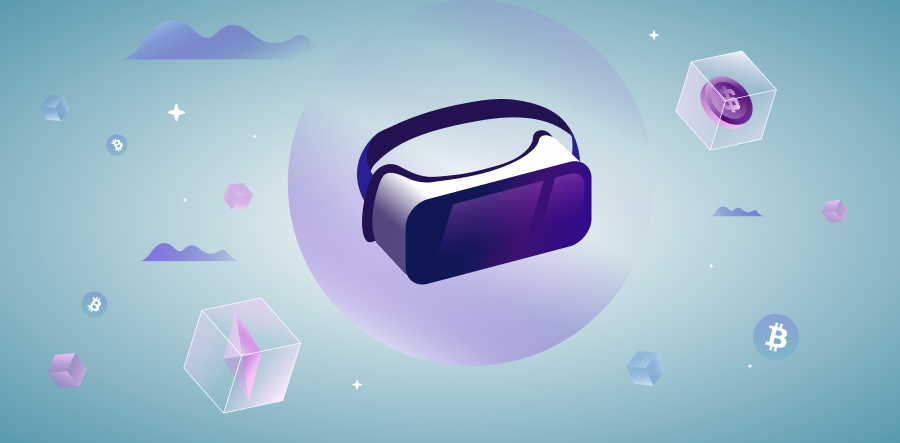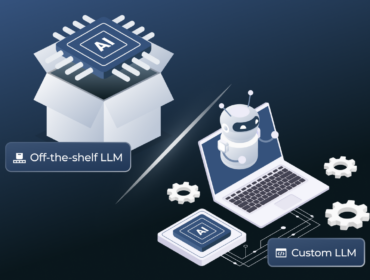The decentralized finance (DeFi) sector reached $15 billion in 2020 from less than $1 billion a year before. At the same time, the metaverse market can grow to $783 billion in 2024 from $478 billion in 2020. And here’s some news. With MetaFi, DeFi and the metaverse can merge into a new parallel economy with huge potential.
Many digital assets are tied to specific networks and don’t work across platforms. Solving this problem would bring the principles of DeFi into the metaverse to make it more accessible. And that’s what MetaFi is set to achieve.
MetaFi standardizes digital assets on blockchain technology. Doing so would make cryptocurrency, financial transactions, and NFTs sortable and readable in any marketplace and virtual world.
Still not sure what the MetaFi, DeFi, or the metaverse are about? This article will introduce you to the basics.
The new economic paradigm of DeFi and the metaverse
The traditional centralized finance system gradually transforms under the impact of blockchain, algorithmic tools, and virtual reality. Let’s look at the new pillars of the emerging decentralized economy up close.
Decentralized finance
Decentralized finance (DeFi) refers to peer-to-peer (P2P) financial services on distributed public blockchains. Its primary goal is to allow users to pay, take loans, exchange currency, and conduct other financial operations without third-party intermediaries.
This technology also aims to be faster and more secure than traditional finance. All financial transactions occur on the blockchain — an unmodifiable public ledger of P2P operations. The banks and controlling institutions are replaced with smart contracts — self-executing applications execute deals according to the predefined rules. These decentralized services and your digital wallets are accessible via DeFi apps (dApps).
DeFi is designed for digital tokens, which may be fungible and non-fungible. Fungible tokens refer to cryptocurrency (primarily stablecoins and their derivatives), and non-fungible tokens (NFTs) are unique cryptographic assets that represent virtual objects, art, media, or ownership rights.
What’s more, these assets are composable. You can compile and reprogram them to create new financial instruments. That includes creating new NFTs for the metaverse, which can be accessible in different virtual worlds with MetaFi.
The metaverse
The metaverse is an online virtual reality environment where users can interact with each other through digital avatars. It’s accessible mainly via virtual reality and augmented reality technologies, as well as web browsers.
But it’s not just virtual reality. It’s a shared, persistent, and permissionless system, heavily integrated with a decentralized P2P ledger, smart contracts, and digital tokens (cryptocurrency, NFTs, and derivatives).
Best of all, the metaverse and DeFi can complement each other to establish a transparent and engaging economic system.

How DeFi and metaverse interconnect
DeFi for the metaverse introduced many possibilities for investors, traders, digital creators, and businesses.
- Marketplaces can host their platforms across virtual worlds to improve their reach as more users will get to produce and trade their NFTs and crypto.
- Investors may create, promote, and sell virtual real estate, land, private islands, and other property.
- Digital creators can produce wearable objects, avatars, and other assets for metaverse users.
- Yield farmers get the ability to lend unique in-game items for a share of earnings or fixed payments.
- Art businesses gain more ways to promote their artwork, host NFT galleries, and conduct auctions.
- Games in the metaverse can involve a play-to-earn element, allowing users to get specific tokens for their contributions to the game.
- Brands often create fan (access) tokens that give their customers access to VIP communities, restricted virtual worlds or content, or voting rights for club decisions.
Yes, this sounds surreal. But there’s a problem that MetaFi has to solve before we can fully realize the potential of DeFi for the metaverse.
The interoperability problem of DeFi and the metaverse
Interoperability, or the lack of standardization, is the biggest obstacle for DeFi. The technology revolves around blockchain frameworks (primarily on Ethereum). All dApps, cryptocurrencies, and digital assets are built on top of these frameworks that have their own ecosystems with shared application logic.
Basically, tokens and applications created for one framework might not communicate with other frameworks. This locks their value to specific platforms, isolating them from the decentralized economy.
The metaverse has a similar problem because it consists of diverse virtual worlds built on different tech stacks. Without interoperability, your digital assets won’t work or have no value on some platforms.
So, the metaverse needs interoperability to implement DeFi principles and make tokens accessible across virtual worlds. And MetaFi might be the solution.

How MetaFi standartizes DeFi for the metaverse
MetaFi standardizes cryptocurrency, NFTs, and their derivatives to make them accessible across the metaverse. It relies on the metadata information on blockchains to identify descriptive, structural, statistical, and legal information about the digital assets.
For example, metadata for NFTs usually contains a link to the associated picture, video, or audio. It’s also possible to add information to cryptocurrency transactions to make them more sortable and machine-readable.
Applying the MetaFi standards to DeFi and metaverse makes digital assets accessible in different blockchain frameworks and platforms. This brings various advantages for metaverse users and forward-thinking businesses.

Benefits of the MetaFi for DeFi and the metaverse
MetaFi is critical for implementing DeFi in the metaverse at scale. Let’s look at its main benefits, so you can see for yourself.
- MetaFi expands the market. Billions of dollars of value are currently locked in proprietary blockchain networks and platforms. But breaking these digital walls will increase the number of traders, marketplaces, and available digital assets.
- More incentive to trade. People are more likely to buy, sell, and rent avatars, digital wearables, and virtual real estate if these assets are available across virtual worlds.
- Creators are in control. Interoperability and decentralization keep creators in control over their content. There are fewer risks of monopoly if the DeFi MetaFi assets are freely tradable across platforms. Plus, it means the creators won’t settle for a fraction of the potential profits, which is the case with platforms like Roblox.
- Gamification of finances. Generation Z is much more comfortable investing and trading in the internet culture. The popularity of Dogecoin and meme stocks is proof of that. That’s why integrating DeFi into the metaverse with MetaFi is sure to spark interest among younger audiences.
- Convenient marketplaces. Uniform metadata standards can help decentralized marketplaces sort different types of crypto transactions and NFTs from various blockchains.
All that said, we still have to overcome major challenges to implement MetaFi in the decentralized metaverse economy. The foundation technologies require improvements to make blockchain more accessible for everyday users. We also need more stable crypto prices to achieve financial interoperability. Plus, there’s the question of decentralized governance mechanisms and the ecological impact of some transactions.
But it’s more important not to be left behind when these problems are solved. That’s why it’s better to invest in DeFi before it goes mainstream.
Conclusion
DeFi in the metaverse can establish a more efficient, accessible, and engaging decentralized economy. However, the biggest obstacle they both face right now is interoperability.
MetaFi solves this problem for DeFi and the metaverse. This technology can make digital assets standardized, allowing cryptocurrency and NFT to work across blockchain networks and virtual worlds.
Do you want to launch your DeFi platform or enhance its functionality? Reach out to us for a consultation.
Frequently Asked Questions
What is DeFi, and how does it work?
DeFi (decentralized finance) is a general term for financial technologies on blockchain networks. It takes banks, regulatory bodies, and other central authorities out of the equation, making transactions more efficient, less expensive, and anonymous.
The technology relies on a P2P ledger (blockchain), cryptocurrencies (primarily stablecoins), and smart contracts. The decentralized financial services are available via dApps and digital wallets.
What is the metaverse economy?
The shared and persistent virtual worlds in the metaverse are an excellent platform for blockchain-based technologies and crypto trading. Companies, art businesses, and investors use it to create, trade, lend, and promote digital assets. As the metaverse evolves, it goes closer to establishing a transparent, global, and decentralized economic system.
What does MetaFi mean for DeFi and the metaverse?
The MetaFi (translates as “metadata” and “DeFi”) introduces interoperability into cryptocurrencies, transactions, and NFTs. Applying the MetaFi concepts to DeFi into the metaverse makes the assets in virtual worlds accessible on different platforms to make the market more innovative, accessible, and engaging.





![MetaFi: Decentralized Finance (DeFi) for the Metaverse Economy What’s the EU Artificial Intelligence Act and How to Comply? [Webinar]](https://unicsoft.com/wp-content/uploads/2024/03/Cover_1140_v1.1-370x280.png)

